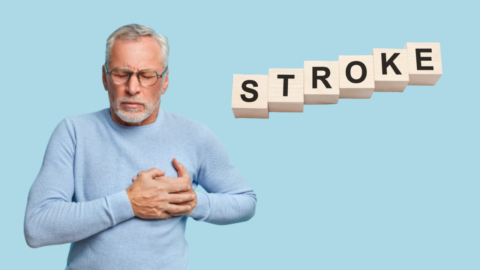Home > Blogs > Neurosurgery > Ways to manage stroke
Ways to combat stroke

It’s a cold winter morning. A middle-aged man residing with his family , gets up and walks to the bathroom. While on his way he develops sudden headache and falls down , on the floor. He has vomiting and becomes unconscious. He is transferred to the nearby hospital. The doctor examines him and says that he has developed paralysis due to brain haemorrhage… This is a common scenario seen at emergency department in any neurosurgical unit. The disease, which has affected the person, is called stroke. The word stroke means blow of thunderbolt. It happens suddenly , making a person disabled for a variable period of lifetime.
When blood supply to the brain is interrupted it leads to brain damage of variable extent and is referred to as stroke by commoners. There are two types of strokes. One, because of the interruption of blood supply to the brain is called as `thrombotic stroke’ and another is because of the bleeding caused by ruptured blood vessels is called as `hemorrhagic stroke’.
We want people to be aware of the second type of stroke -hemorrhagic stroke, where different types of interventions and treatment facilities are available in the Neurosciences department of Sahaydri Hospitals.
TYPE OF HEMORRHAGIC STROKE
1. Intracerebral haemorrhage -When bleeding occurs inside the brain which leads to serious brain damage.2. Subarachnoid haemorrhage -When the weak spot on the blood vessel wall (which usually is present since birth) bursts, the blood spills on the surface of the brain and not inside the brain.
WHEN TO SUSPECT HEMORRHAGIC STROKE?
I History of acute onset of headache I Loss of consciousness or fits I Trouble in walking, speaking or understanding.When to seek immediate medical attention?
(FAST) I F: Face -Is there asymmetry of face?
I A: Arms -Does one of the arm drift down or is unable to rise up?
I S: Speech -Is hisher speech slurred or strange?
I T: Time -In case of any of these signs seek immediate medical help.
RISK FACTORS
- Being overweight
- Physical inactivity
- Heavy drinking
- High blood pressure
- Diabetes
- Tobacco smoking or chewing
- Men are at more risk than women.
TREATMENT:
The choice of treatment depends upon the neurological condition at the time of admission and size and location of the blood clot inside the brain. Small blood clots need not require surgery as they tend to dissolve on their own. Larger blood clots exert pressure on the brain and can lead to rapid neurological worsening and may lead to coma. In such cases the clot can be removed and life can be saved by doing surgical intervention.Balanced diet, regular exercise, quitting smoking and control of blood pressure and blood sugar are keys to a better life, far away from brain haemorrhage or hemorrhagic stroke.
Have queries or concern ?
About Author
Dr. Manish Sabnis
Neurosurgeon
Contact: +91 88888 22222
Email – [email protected]
Patient Feedback
Great doctors, Good facilities, caring and helping staff. I recommend this hospital for day care services.
![]()
![]()
Sangram Shinde
All doctors r very good. There treatments is best. Other staff also good. The service of nurses is great...Hospital is always clean.
![]()
![]()
Vaishali Aitawade
All services provide by hospital are nice and on time. Doctors are polite and co-operative with patient.
![]()
![]()
Ankita Jagtap
All services provided by hospital is good. Hygiene maintained well.Even at night good care provided.
![]()
![]()





